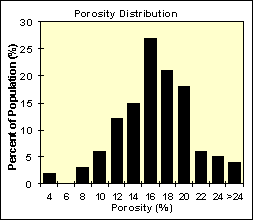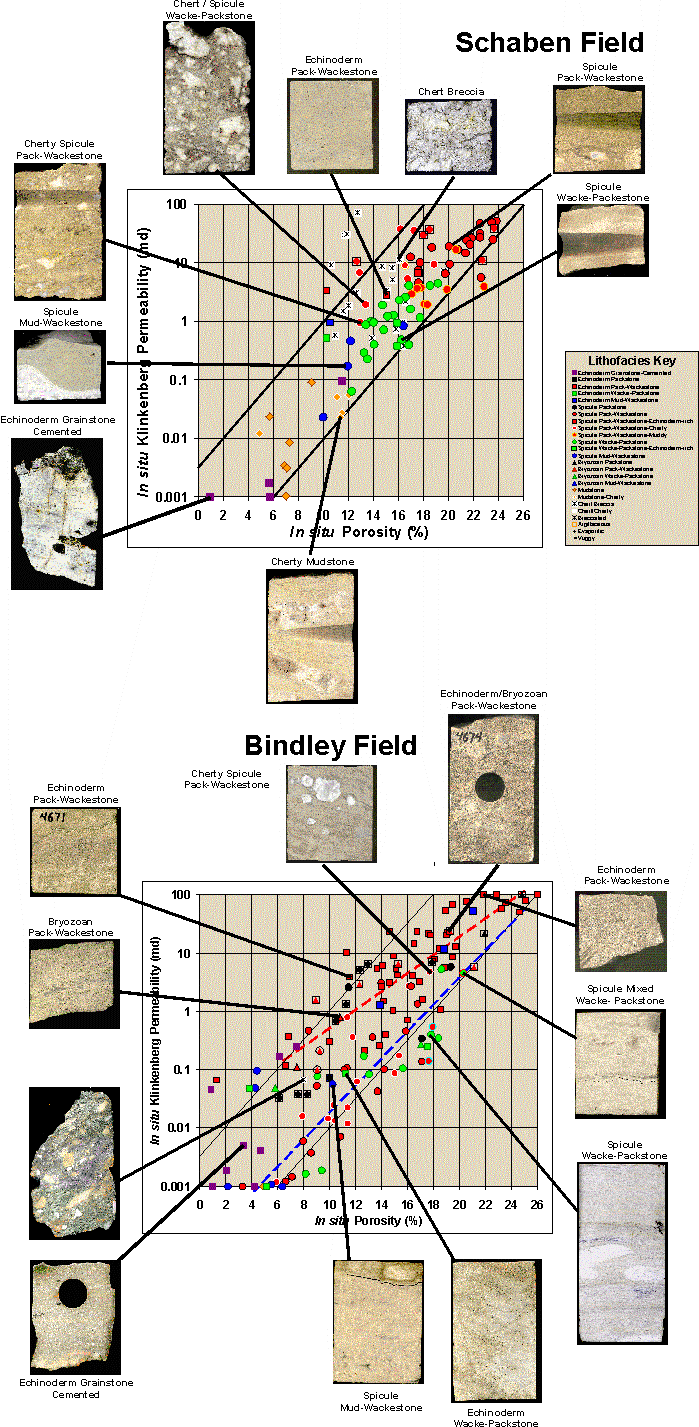 |
|
Kansas Geological Survey Open-file Report 2003-31 |
Rock Petrophysical Properties and Modeling
Sources for Core Analysis Data
 As with many
smaller Mississippian fields, core was not available from within the field.
To provide models for predicting permeability, oil-water relative permeability,
capillary pressure properties, and connate water saturations, regional petrophysical
trends for the Mississippian and trends obtained from analysis of eight cores
from nearby fields were used.
As with many
smaller Mississippian fields, core was not available from within the field.
To provide models for predicting permeability, oil-water relative permeability,
capillary pressure properties, and connate water saturations, regional petrophysical
trends for the Mississippian and trends obtained from analysis of eight cores
from nearby fields were used.
Porosities for the Wellington West field average 16+4%. Porosities are interparticle, intraparticle and moldic. Properties of the moldic porosity rocks are largely controlled by original depositional fabric with permeablity increasing from mudstones to grainstones.
Lithofacies, Permeability, Porosity
Lithofacies and early diagenesis are major controls on permeability (k)
and porosity (![]() ) despite complex
diagenetic overprinting by sub-Pennsylvanian subaerial exposure and burial
processes.
) despite complex
diagenetic overprinting by sub-Pennsylvanian subaerial exposure and burial
processes.
k and
decrease significantly and continuously with decreasing grain/mold size from packstone to mudstone ( a trend exhibited by many other carbonates) and from echinoderm-rich to spicule-rich facies
The permeability-porosity trend for all lithofacies are approximately bounded within two orders of magnitude by trendlines defined by:
log kin situ = 0.25 ![]() in
situ - 2.5
in
situ - 2.5
log kin situ = 0.25 ![]() in
situ - 4.5
in
situ - 4.5
Between these bounding trends each lithofacies exhibits a generally unique
range of k and ![]() which
together define a continuous trend with k decreasing with decreasing
grain/mold size for any given porosity. Each individual lithofacies exhibits
a unique sub-parallel trend to the general trend. Statistically the general
trend is dominated by the large number of spicule-rich samples and is strongly
influenced by mudstone and cemented echinoderm grainstone properties:
which
together define a continuous trend with k decreasing with decreasing
grain/mold size for any given porosity. Each individual lithofacies exhibits
a unique sub-parallel trend to the general trend. Statistically the general
trend is dominated by the large number of spicule-rich samples and is strongly
influenced by mudstone and cemented echinoderm grainstone properties:
log kin situ (md) =0.24 ![]() in
situ(%) - 3.78
in
situ(%) - 3.78

|
|
e-mail : webadmin@kgs.ku.edu
Last updated July 2003
http://www.kgs.ku.edu/PRS/publication/2003/ofr2003-31/P2-01.html
